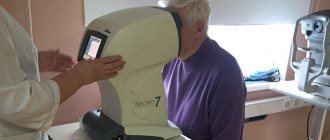Pharmacological properties
Artificial tear solution is a keratoprotector drug that has a softening, lubricating effect on the corneal epithelium. The drops have a high degree of viscosity, which significantly increases the duration of their contact with the cornea. The refractive index of the solution is equal to that of natural tears. The action of the drug is aimed at restoring, stabilizing and reproducing the optical properties of the tear film, as well as protecting the cornea from the irritating effects of other eye drops.
When using the drug, an improvement in the condition of the cornea (reduction of foci of inflammation, its epithelization) occurs, as a rule, by 3-5 days, a pronounced improvement (cure) occurs at 2 or 3 weeks of using the drop solution.
Artificial tears: what are they?
Table of contents
What are artificial tears used for?
Who is indicated for the use of artificial tears? Composition of artificial tears preparations The principle of action of artificial tears How often can artificial tears be used? Precautions when using artificial tears Gilan solution for dry eye syndrome Artificial tear preparations are aqueous solutions of moisturizing biologically inert or active polymers. In order to make the preparations as similar as possible to natural tear fluid, various natural and chemical additives are introduced into them.
Such solutions are used to prevent and treat dry eye syndrome, a condition caused by changes in the quantity and composition of natural tears.
What are artificial tears used for?
“Artificial tear” preparations are used both to improve the osmolarity and acidity of natural tears, and as a full-fledged tear substitute, when the mechanism of tear film formation is disrupted and it is not formed naturally, and clinical signs of corneal damage are observed.
The solution applied to the surface of the eyeball, due to its viscous consistency, is not absorbed, but spreads and is retained on the cornea. Thanks to this action, the optical properties of the tear film are reproduced, the condition of the cornea is stabilized and improved.
Who is indicated for the use of artificial tears?
The range of applications for artificial tears is very wide. Moisturizing solutions are prescribed not only as a treatment, but also as a preventive and auxiliary agent, for example:
- to prolong the effect of other ophthalmic drugs;
- to eliminate irritation caused by other eye drops or external factors;
- to relieve symptoms of fatigue when driving, working and playing on the computer.
Tear substitutes are indicated for patients with ophthalmological diseases:
- dry eye syndrome;
- keratopathy;
- trophic ulcers and corneal erosion;
- xerosis;
- Sjögren's disease;
- Stevens-Johnson syndrome;
- keratosis.
Also, such drugs are used during the rehabilitation period after keratoplasty, refractive error correction operations, and cataract removal.
Composition of artificial tears
Tear substitutes are classified into 4 groups:
- preparations with hyaluronic acid;
- cellulose derivatives;
- preparations based on carbomer or polyvinyl alcohol;
- preparations with several moisturizing components.
Solutions with hyaluronic acid and other moisturizing components are characterized by fewer adverse reactions, while preparations with carboxymethylcellulose and hydroxypropylcellulose can cause redness of the eyes, photophobia, and general discomfort. In addition, hyaluronate increases tissue permeability, which contributes to the rapid onset of the therapeutic effect.
How artificial tears work
Artificial tear preparations work as keratoprotectors. They envelop the surface of the cornea and protect it from external influences, while at the same time promoting the flow of nutrition to the corneal tissues.
The substances that make up the keratoprotector prosthetize (replace) the insufficient layer of the tear film, provide long-term hydration, stimulate cell regeneration, and have an anti-inflammatory effect.
A decrease in symptoms is observed, as a rule, on days 3-5, and pronounced improvements after 2-3 weeks. Depending on the severity of the disease, a tear substitute can be used for a longer period.
How often can artificial tears be used?
Artificial tears are biocompatible and therefore do not cause serious side effects. Cases of an allergic reaction are extremely rare. The drug is instilled into the conjunctival sac, 1-2 drops. The frequency of instillation is from 4 to 8 times a day, but if necessary, you can use it every hour. Use tear substitutes until symptoms disappear.
Despite the fact that such solutions belong to the group of over-the-counter solutions, they must be selected by an ophthalmologist. The viscosity of the solution and the presence of preservatives in it are of great importance for the effectiveness of treatment.
Precautions when using artificial tears
During the first instillation of the solution, a burning sensation and blurred vision may occur. If the drug is chosen incorrectly, there is a risk of exacerbation of other pathologies. For those who wear contact lenses, it is advisable to use solutions with hyaluronic acid, which ensure good gliding of the lens on the surface of the eye and moisturizing the cornea.
An undesirable effect is possible during treatment with eye drops that contain artificial preservatives. For eye hypersensitivity, tear replacement therapy is not performed.
Gilan solution for dry eye syndrome
Gilan eye drops are a tear substitute based on natural hyaluronic acid. It has a pronounced moisturizing effect and is well tolerated when instilled into the conjunctival cavity. Suitable for pregnant women and elderly people.
The solution contains no preservatives, which significantly reduces the risk of an undesirable reaction to tear replacement therapy. Gilan drops do not blur vision and are compatible with all types of contact lenses, so they can be used on a regular basis as a prophylactic to prevent dry eye syndrome.
Indications for use
- Lagophthalmos, insufficient lacrimation, conditions after eyelid surgery, eyelid deformation, trophic ulcers, ectropion, corneal erosion, conjunctivitis, keratopathy, corneal burns, bullous degeneration of the cornea, microdefects in its epithelium, in the postoperative period of keratoplasty and keratectomy;
- In combination therapy of the disease and Sjögren's syndrome, dry eye syndrome, Stevens-Johnson syndrome, keratosis, xerosis;
- Eye irritation due to exposure to external factors (dust, smoke, cold wind, chlorinated water, bright lighting, allergens);
- Eye strain due to prolonged visual stress (working at a computer or at close range, driving a car);
- Conducting ophthalmological examinations, including gonioscopy, electrooculography, electroretinography, ultrasound examination of the organ of vision.
Artificial tear drops eye 0.5% 10 ml
Compound:
Eye drops 1 ml
active substance:
hypromellose 5 mg
excipients: boric acid - 8 mg; sodium tetraborate - 2 mg; disodium edetate - 0.5 mg; macrogol 400 - 10 mg; histidine hydrochloride monohydrate (in terms of anhydrous substance) - 2.5 mg; sodium chloride - 1.6 mg; potassium chloride - 0.8 mg; purified water - up to 1 ml
Description of the dosage form:
Drops: transparent, colorless, odorless liquid.
Pharmachologic effect:
- emollient, lubricating, keratoprotective.
Pharmacodynamics
Protector of the corneal epithelium, has a lubricating and softening effect, has high viscosity, increases the duration of contact of the solution with the cornea. The refractive index of the solution is similar to natural tears. Restores, stabilizes and reproduces the optical characteristics of the tear film. Extends the effect of other eye drops and protects the cornea from their irritating effects. Subjective and objective improvement (epithelialization, reduction of hyperemia and lesions) usually occurs within 3-5 days, marked improvement or complete cure - within 2-3 weeks.
Indications for the drug Artificial tear:
insufficient lacrimation, lagophthalmos, deformation of the eyelids, ectropion, condition after plastic surgery on the eyelids, erosion and trophic ulcers of the cornea, condition after chemical and thermal burns of the cornea and conjunctiva, bullous dystrophic changes in the cornea, keratopathy, microdefects of the corneal epithelium, condition after keratoplasty, keratectomy;
prolonging the action or eliminating the irritating effect of other eye drops;
combined treatment of dry eye syndrome: Stevens-Johnson syndrome, Sjogren's syndrome or disease, xerosis, keratosis (often in combination with therapeutic contact lenses);
eye irritation caused by smoke, dust, cold, wind, sun, salt water, allergies;
eye strain when working on a computer for a long time, driving a car;
carrying out diagnostic procedures: gonioscopy, electroretinography, electrooculography, ultrasound of the eyes.
Use during pregnancy and breastfeeding:
There is no experience of using the drug during pregnancy and lactation. Use in pregnant and nursing mothers is possible only as prescribed by the attending physician, if the expected therapeutic effect outweighs the risk of possible side effects.
Directions for use and dosage:
Conjunctivally. Instill 1-2 drops into the conjunctival sac 4-8 times a day; if necessary, you can administer it every hour. The course of treatment is at least 2–3 weeks for nosologies that require long-term use.
Before use, consultation with a specialist is required.
The method of administration and dosage regimen of a particular drug depend on its release form and other factors. The optimal dosage regimen is determined by the doctor.
Storage mode, interactions and side effects are indicated in the instructions.
special instructions
Instillation of the drug can be carried out only after removing contact lenses; it is recommended to reinstall them half an hour after instillation.
Instilling the solution may cause blurred vision. Therefore, you can get behind the wheel no earlier than a quarter of an hour after entering it.
It is better to store the artificial tear solution at room temperature. Do not give to children.
When opening the original packaging, the shelf life of the solution is 30 days.
Artificial tear eye drops 5ml with dropper cap No. 1
Name
Artificial tear.
Release forms
Drops.
FTG
Keratoprotector.
What is the drug and what is it used for?
ARTIFICIAL TEARS are used to eliminate dry eyes caused by insufficient secretion of natural tear fluid. Replenishing the lack of natural tears helps to moisturize the eye and reduce irritation.
Do not use this drug if
• you are allergic to hypromellose, dextran 60 or any other component of the drug indicated in the Composition section. If you are not sure whether any of the above applies to you, tell your doctor before using the drug.
Special instructions and precautions
If you experience headaches, eye pain, blurred vision, eye irritation, prolonged redness, or if dry eyes get worse or persist for more than 3 days, stop using the drug and consult your doctor. Do not use the drug if the solution changes color or becomes cloudy. ARTIFICIAL TEARS contain benzalkonium chloride, which may irritate the eyes. Avoid contact with soft contact lenses. Before using the drug, remove your contact lenses and put them back on no earlier than 15 minutes after use. ARTIFICIAL TEARS can change the color of soft contact lenses. Children. Adequate and controlled studies have not been conducted; There is no data on the possibility of using the drug in children.
Other drugs
Check with your doctor if you are taking, have recently taken, or may start taking any other medications. This also applies to any drugs sold without a prescription. If you are using several topical ophthalmic medications, maintain an interval of at least 5 minutes between each use. Eye ointments should be used after ARTIFICIAL TEARS. Pregnancy, breastfeeding and fertility If you are pregnant, think you may be pregnant, or are planning to become pregnant, consult your doctor before using ARTIFICIAL TEARS. Presumably, the components of the drug are not absorbed systemically, do not exhibit systemic toxicity and do not affect reproductive function and intrauterine development. It is not known whether hypromellose, dextran 60, or other components of the drug are excreted in breast milk. Driving or operating machinery ARTIFICIAL TEARS may cause blurred vision. If this reaction occurs, refrain from driving vehicles or operating machinery.
Use of the drug
Always use this medication as directed by your doctor. If in doubt, consult your doctor. Dose 1-2 drops as needed (according to doctor's recommendations). Method of use The drug ARTIFICIAL TEAR is intended for instillation into the conjunctival sac. Before use, carefully read this section and sequentially perform the operations presented below in the text and in Figures 1-6. 1. Remove the bottle from the package. 2. If the bottle is sealed with an aluminum cap: position the scissors at an angle of 45 degrees to the cap, picking up its lower edge, with an upward movement, remove the aluminum cap along with the rubber cap (Fig. A 1-2). 3. If the bottle is sealed with an aluminum cap with a plastic lining: forcefully pull the plastic lining from the side of the cuts, lifting it vertically, then sharply pull down along the bottle to break the integrity of the cap. Remove the aluminum cap and rubber plug (Fig. B 1-2). 4. Remove the dropper from the package and place it tightly on the bottle (Fig. 3). 5. Turn the bottle vertically to remove any air bubbles and wait a few seconds. In case of a large bubble, return the bottle to its original position, and then slowly repeat the action, gently tapping the bottom of the bottle (Fig. 4). 6. Apply drops by pressing your index finger and thumb onto the pipette (Fig. 5). Do not touch the eye dropper or other surfaces as this may cause the solution to become infected. 7. Turning the bottle over, close the pipette with a special stopper (Fig. 6).
If you use ARTIFICIAL TEAR more than you should
There is no information about cases of overdose. If necessary, rinse eyes with plenty of warm water. If you forgot to use the drug ARTIFICIAL TEAR If you forgot to instill the drug, do it next time at the usual time. Do not take a double dose to make up for a missed dose. If you have questions about the use of the drug, consult your doctor.
Possible adverse reactions
Like all medicines, ARTIFICIAL TEARS can cause side effects, although not everyone gets them. The following adverse reactions may occur: Very common (may affect more than 1 in 10 people): • blurred vision. Common (may affect less than 1 in 10 people): • residual dry eye, eyelid disease, unusual sensation, foreign body sensation or discomfort in the eye. Uncommon (may affect less than 1 in 100 people): • headache, photophobia, decreased sensitivity of the eye, itching, eye irritation, redness of the eye, discomfort (skin). Frequency unknown: • allergic reactions, redness of the eyelids, swelling of the eyes, pain in the eyes, discharge from the eyes, inflammation of the edges of the eyelids, increased lacrimation.
Reporting Adverse Reactions
If you experience any unwanted reactions, consult your doctor. This recommendation applies to any possible adverse reactions, including those not listed in the package insert. You can also report adverse reactions to the information database on adverse reactions (actions) to drugs, including reports of ineffectiveness of drugs identified in the state (UE "Center for Expertise and Testing in Healthcare of the Ministry of Health of the Republic of Belarus", rceth.by). By reporting side effects, you can help provide more information about the safety of the drug.
Storage of the drug
Store in a place protected from light at a temperature not exceeding 25 °C. Keep out of the reach and sight of children. Store in original packaging. Store the opened bottle in a place protected from light at a temperature of 15 °C to 25 °C for 28 days. Shelf life – 2 years. Do not use after expiration date. Do not pour any remaining medication down the drain. Ask your pharmacist how to dispose of medications that you no longer need. These measures will protect the environment.
Compound
One bottle contains active ingredients: hypromellose (Methocel E4M Premium) - 15.0 mg, dextran 60 - 5.0 mg. Excipients: disodium phosphate dihydrate, sodium dihydrogen phosphate dihydrate, sodium chloride, disodium edetate, benzalkonium chloride, water for injection.
Appearance of the drug and contents of the package
ARTIFICIAL TEAR solution (eye drops) is a transparent, colorless or yellowish liquid. 5 ml in glass bottles, sealed with rubber stoppers and rolled with aluminum or aluminum caps with a plastic lining. A self-adhesive label is placed on the bottle. The bottle, along with a dropper cap and a leaflet, is placed in a cardboard pack.
Vacation conditions
Over the counter.
Buy Artificial tear eye drops 5 ml with dropper cap No. 1 in the pharmacy
Price for Artificial tear eye drops 5 ml with dropper cap No. 1
Instructions for use for Artificial tear eye drops 5ml with dropper cap No. 1




